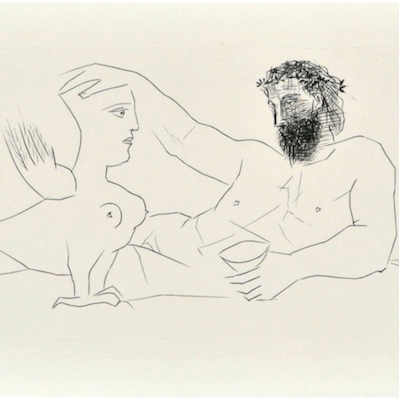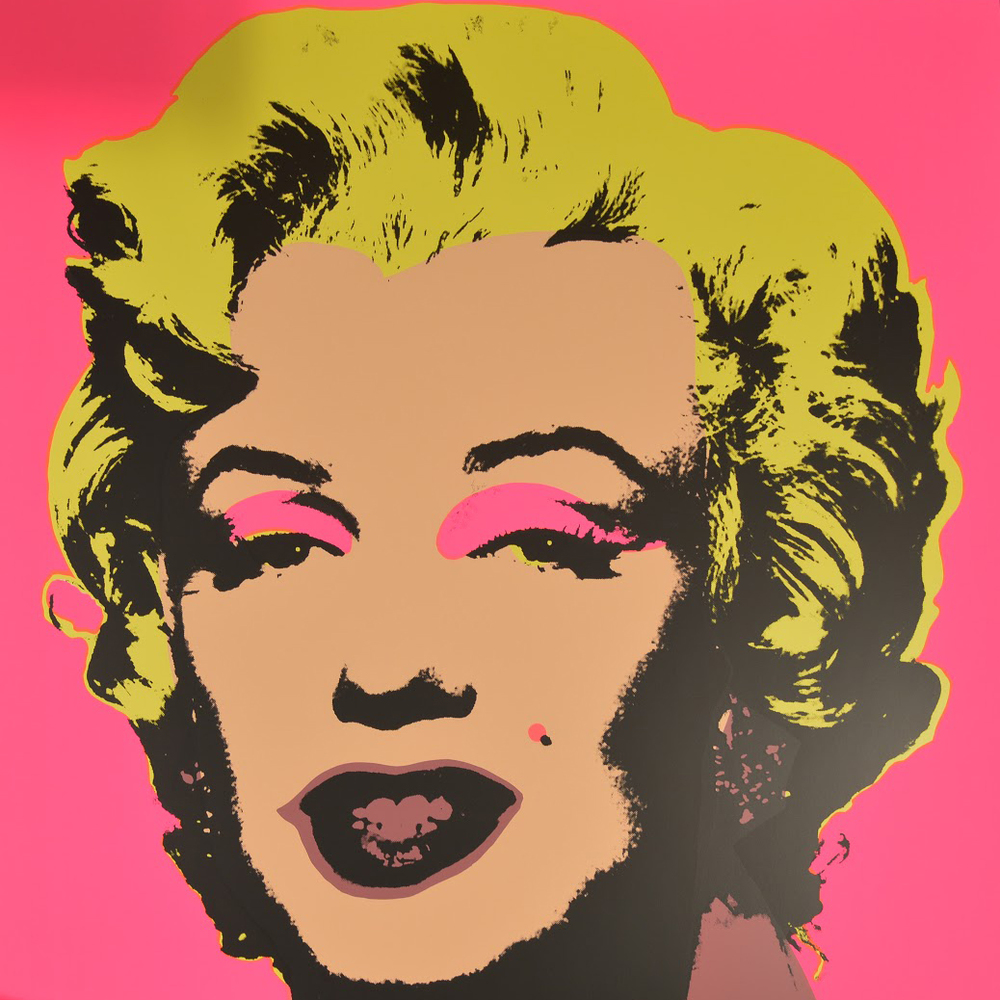
Art Medium
Printmaking is the process of printing an image by transferring ink from a matrix, the block, stone, or plate, onto paper. There are a vast number of printmaking techniques allowing artists to achieve different quality of line and tonal range. Artists often use multiple printmaking techniques in combination to achieve a desired effect. There are four basic categories of printmaking methods.
Relief Prints: Created when ink is applied to the surface of the original image, printing the negative image of what was carved into the matrix, such as in woodcut and linocut.
Intaglio Prints: Created when ink is applied beneath the surface of the original image, printing the positive of the image incised into the matrix, such as in engraving, etching, mezzotint, and aquatint.
Planographic Prints: Created when the matrix retains its original surface but is specially prepared and inked allowing for the transfer of the image, such as in lithography and monotyping.
Stencil: Created when ink is pressed through a prepared screen such as in screen-printing or pochoir*.
Aquatint
Aquatint describes either the intaglio process or the print made by etching a plate through a special etching ground (a coating over a copper plate) composed of particles of resin. The acid bites around the particles creating a tooth (or deep grooves) in the plate to hold the ink. Aquatint is used to create tonal effects.
Drypoint
Drypoint dates to the 15th century. It is a type of intaglio print (or the tool) that scratches lines or tones into the surface of a bare metal plate with a sharp point or other abrasive tool. Unlike etching, acid is not used to bite the design into the plate. Compared to engraving, the incising point is not pushed through the surface, but rather used as a drawing tool. Drypoint may also be used in combination with other intaglio techniques, as well as for retouching or reinforcing designs on worn or blurred etching plates.
Engraving
The printing of images from engraved metal plates began in the 15th century. Engraving is intaglio printmaking where tools cut an image into a plate, and then multiple impressions can be made. The incised image, which lies below the plate’s surface, is filled with ink, and then pressure is used to force the paper into the inked lines, creating a slightly raised three-dimensional line and an embossed platemark.
Etching
Etching is the intaglio printmaking process of using strong acid to cut into the unprotected parts of a metal surface to incise an image into the metal plate. The plate is coated with an acid-resistant substance, called a ground, and the design is then drawn in this ground with a sharp tool. When the plate is exposed to acid, the acid eats away at the areas that are not protected by the wax coating, creating a recessed image. The recessed lines hold ink, which is transferred onto the paper.
Linocut
Linocut is a type of relief printing, using linoleum. Using different tools, the artist cuts the design into linoleum. Linocuts often resemble woodcuts. Major artists, like Henri Matisse and Pablo Picasso, worked in linoleum. Matisse executed 70 linocuts between 1938 and 1952. Picasso, after using linoleum for popular posters in the early 1950s, began a series of innovative color linocuts in 1959. Later, some felt linoleum block printing was suitable only for children, amateurs and the uncultured. With the rise of commercial collaboration between printmaker and publisher, linocut’s popularity fell.
Lithography
Invented by Alois Senefelder in 1796, lithography is a planographic printmaking technique based on the antipathy of grease and water. Ink is applied to a grease-treated image on a flat printing surface (a limestone slab or metal plate). The non-image areas, which hold moisture, repel oil-based ink while the grease-treated image area attracts the ink. The inked surface is then printed onto paper using a special press.
Monotype
Monotype (unique, single impression) is both a type of print and the process where a drawing or painting is executed on a flat, unworked printing plate or other surface. It is then transferred through pressure to a sheet of paper. Monotype means only one strong impression can be taken. Occasionally, ghosts or cognates can be made from residual ink on the printing surface.
Photogravure
Photogravure is a photomechanical printing process based on 1850’s patents, and then developed commercially in 1878. In this process, a copper plate was coated with a fine bitumen dust to provide grain, and then heated to cause it to adhere. Around 1900, photogravure was used to reproduce the work of some of the most distinguished photographers, allowing high-quality reproductions to be available at a reasonable cost.
Screen Printing
The screen-printing technique was developed from stenciling in the 20th century. Also known commercially as silk screening, a group of American artists renamed it serigraphy in 1940 to denote its use for fine art. A gauze textile is stretched on a frame. The stencil is made by selectively blocking parts of the mesh. A thick ink is wiped across the mesh so it passes through the unblocked areas onto the surface to be printed.
Stenciling (or Pochoir)
Stenciling is a printmaking technique that allows a design to be repeated on almost any surface by rubbing, brushing or spraying ink, dye or paint through holes cut in a thin sheet of semi-rigid, moisture-proof material. Placing any object against a surface and then depositing color around it, makes a negative stencil design.
Woodcut
A woodcut is both a type of relief print and the process by which it is made. The term is often used for any printmaking technique using a wooden block. However, the term applies only to cuts made on planks of wood. The method that involves cutting the design on the end grain of the block is called wood engraving. The term xylography is sometimes used to refer to both processes.



